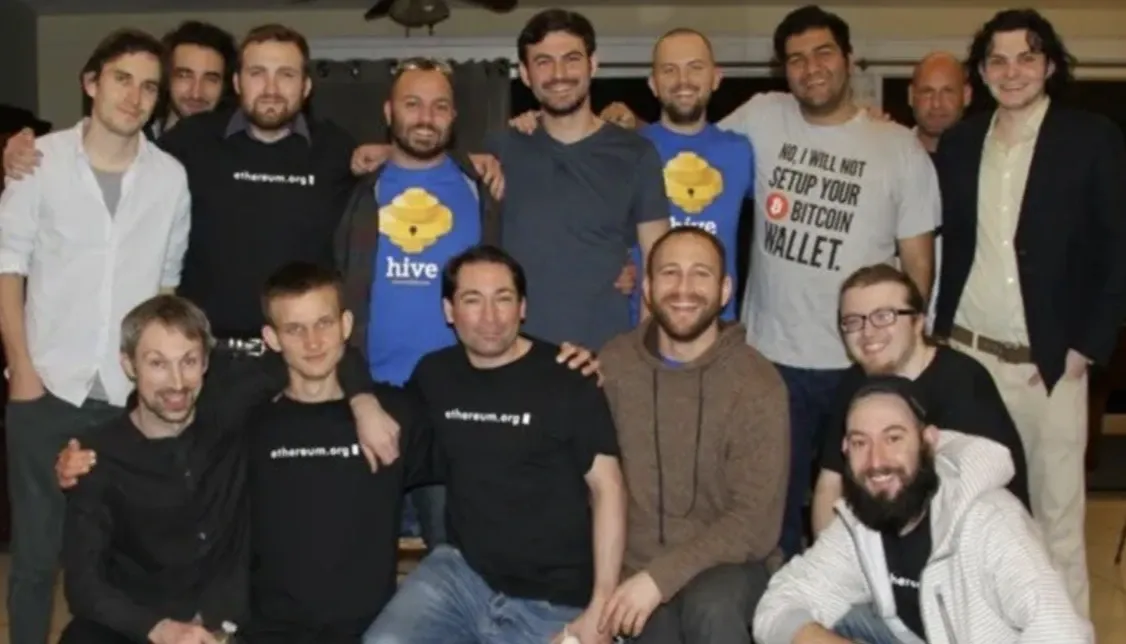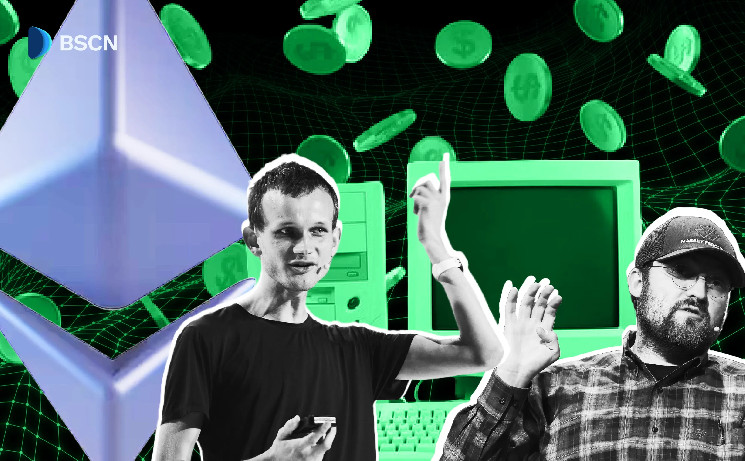Introduction
The Ethereum Digital Machine (EVM) stands as a cornerstone of blockchain expertise, representing a groundbreaking innovation that has redefined the potential of decentralized computing. This complete information will discover the intricacies of the EVM by means of a number of crucial views:
- Its basic technical structure
- Historic growth and evolution
- Transformative influence on digital interactions
- Potential future improvements
What’s Ethereum?
Earlier than diving into the EVM, it is essential to know its mum or dad platform.Ethereum is a decentralized, open-source blockchain platform launched by Vitalik Buterin, Gavin Wooden, Charles Hoskinson, Anthony Di Iorio, and Joseph Lubin in 2015. In contrast to Bitcoin, which primarily features as a digital forex (ETH), Ethereum was designed as a complete blockchain ecosystem able to executing advanced computations and supporting subtle purposes.

A few of Ethereum’s founding members, together with Vitalik Buterin himself (Cointelegraph)
The Ethereum Digital Machine: Technical Basis
What’s the EVM?
The Ethereum Digital Machine (EVM) is a Turing-complete computational atmosphere that serves because the runtime for good contracts on the Ethereum community. It supplies a crucial infrastructure that permits decentralized computation, safe and clear code execution, platform-independent good contract deployment, and constant execution throughout a number of community nodes.
Key Traits of EVM
The EVM’s structure is distinguished by a number of basic traits:
- Deterministic Execution: Ensures equivalent outcomes throughout all community nodes
- Sturdy Isolation: Prevents good contracts from interfering with one another
- Useful resource Metering: Makes use of fuel to restrict computational complexity and forestall infinite loops
- Stack-based Structure: Manages computational states by means of an environment friendly reminiscence mannequin
Historic Improvement
The EVM emerged from Ethereum’s imaginative and prescient to create a extra versatile blockchain platform. Its growth trajectory has been marked by vital milestones. The preliminary idea was proposed by Ethereum founders in 2014, with the primary implementation launching alongside Ethereum’s mainnet in 2015. A pivotal second got here in 2016 with the DAO hack, which led to substantial safety enhancements. From 2020 to 2022, the ecosystem has centered on ongoing optimization and scalability enhancements.
Sensible Contracts: The EVM’s Major Use Case
Sensible contracts are self-executing contracts with phrases straight written into code. The EVM permits these contracts by offering a dependable execution atmosphere, supporting a number of programming languages (withSolidity being the most well-liked), and guaranteeing tamper-proof and clear contract execution.
These good contracts discover purposes throughout numerous domains, together with decentralized finance (DeFi) purposes, automated insurance coverage claims, provide chain administration, asset tokenization, and the creation of decentralized autonomous organizations (DAOs).
Different Blockchains Using EVM Compatibility
A number of blockchain platforms have adopted EVM compatibility, resemblingBinance Sensible Chain,Polygon,Avalanche, andFantom. This compatibility permits builders to port Ethereum good contracts throughout a number of platforms, considerably growing interoperability and decreasing growth friction.
Different Sensible Contract Platforms
Whereas EVM dominates the good contract panorama, different platforms supply distinctive approaches.Solana supplies a high-performance blockchain with a definite structure, utilizing a Proof of Historical past (PoH) consensus mechanism and supporting good contracts by means of the Rust programming language. It affords increased transaction speeds in comparison with EVM-based platforms and is designed for scalability and low transaction prices.
Different notable platforms embodyCardano, which makes use of a Haskell-based good contract language,Tezos with its OCaml-based growth method, andAlgorand, which focuses on a pure proof-of-stake consensus mechanism.
Technical Challenges and Limitations
The EVM, regardless of its revolutionary capabilities, faces a number of technical challenges. Scalability stays a major constraint, with excessive computational prices limiting its efficiency in comparison with conventional computing environments. Ongoing safety vulnerabilities proceed to demand fixed consideration and enchancment from the blockchain neighborhood.
Way forward for EVM
The Ethereum ecosystem is advancing by means of a number of crucial strategic developments:
Scaling Ethereum
Rollups characterize a transformative scaling answer that batch transactions off-chain, considerably decreasing prices for customers. Proto-Danksharding is poised to handle present knowledge expense limitations, promising extra environment friendly and cheaper transaction processing.
Enhanced Safety
Whereas Ethereum stays essentially the most safe and decentralized smart-contract platform, ongoing enhancements goal to additional improve its resilience towards potential future assaults. The main target is on sustaining and strengthening Ethereum’s strong safety structure.
Enhancing Consumer Expertise
Mass adoption requires dramatically decreasing entry obstacles. The objective is to offer customers with the advantages of decentralized, permissionless, and censorship-resistant entry whereas creating an expertise as seamless and intuitive as conventional web2 purposes.
Quantum Resistance
Future upgrades are designed to future-proof Ethereum, guaranteeing the platform stays resilient and adaptable to rising technological challenges, together with potential quantum computing threats.
These strategic initiatives place Ethereum to keep up its management in blockchain expertise, addressing present limitations whereas making ready for future technological landscapes.

Some technologists worry that quantum computing poses a serious threat to blockchain tech (IoT World In the present day)
For extra data, go to the Ethereum roadmap.
Conclusion
The Ethereum Digital Machine represents a pivotal innovation in blockchain expertise, enabling a brand new paradigm of decentralized computing. Because the ecosystem continues to mature, the EVM will probably play an more and more crucial position in reshaping digital interactions, monetary methods, and computational frameworks.



